Abstract
The level of gibberellin(GA)-like material in cotyledons of soybean (Glycine max L.) was highest at mid-pod fill—about 10 nanograms GA3 equivalents per gram fresh weight of tissue, assayed in the immersion dwarf rice bioassay. This amount is about 1000-fold less than levels in Pisum and Phaseolus seed, other legume species whose spectrum of endogenous gibberellins (GAs) is well known. The metabolism of [14C]-GA12-7-aldehyde (GA12ald)—the universal GA precursor—by intact, mid-pod-fill, soybean cotyledons and their cell-free extracts was investigated. In 4 hours, extracts converted GA12ald to two products—[14C]GA12 (42% yield) and [14C]GA15 (7%). Within 5 minutes, intact embryos converted GA12ald to [14C]GA12 and [14C]GA15 in 15% yield; 4 hour incubations afforded at least 22 products (96% total yield). The putative [14C]GA12 was identified as a product of [14C]GA12ald metabolism on the basis of co-chromatography with authentic GA12 on a series of reversed and normal phase high pressure liquid chromatography (HPLC) and thin-layer chromatography (TLC) systems, and by a dual feed of the putative [14C]GA12 and authentic [14C]GA12 to cotyledons of both peas and soybeans. The [14C]GA15 was identified as a metabolite of [14C]GA12ald by capillary gas chromatography (GC)-mass-spectrometry-selected ion monitoring, GC-radiocounting, HPLC, and TLC. By adding the [14C] metabolites of [14C]GA12ald to a different and larger extract (about 0.2 kg fresh weight of soybean reproductive tissue) and purifying endogenous substances co-chromatographing with these metabolites, at least two GA-like substances were obtained and one identified as GA7 by GC-mass spectrometry. Since [14C]GA9 was not found as a [14C]metabolite of [14C]GA12ald, soybean embryos might have a pathway for biosynthesis of active, C-19 gibberellins like that of the cucurbits; GA12ald → GA12 → GA15 → GA24 → GA36 → GA4 → GA7.
Full text
PDF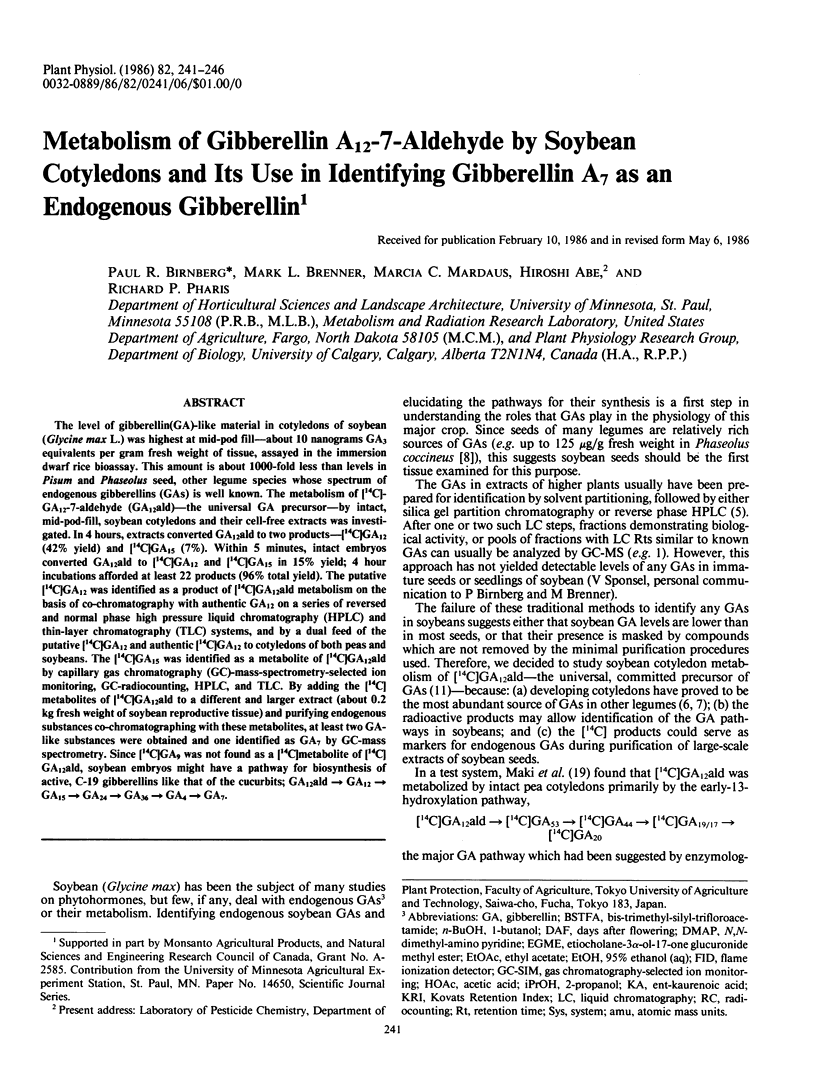
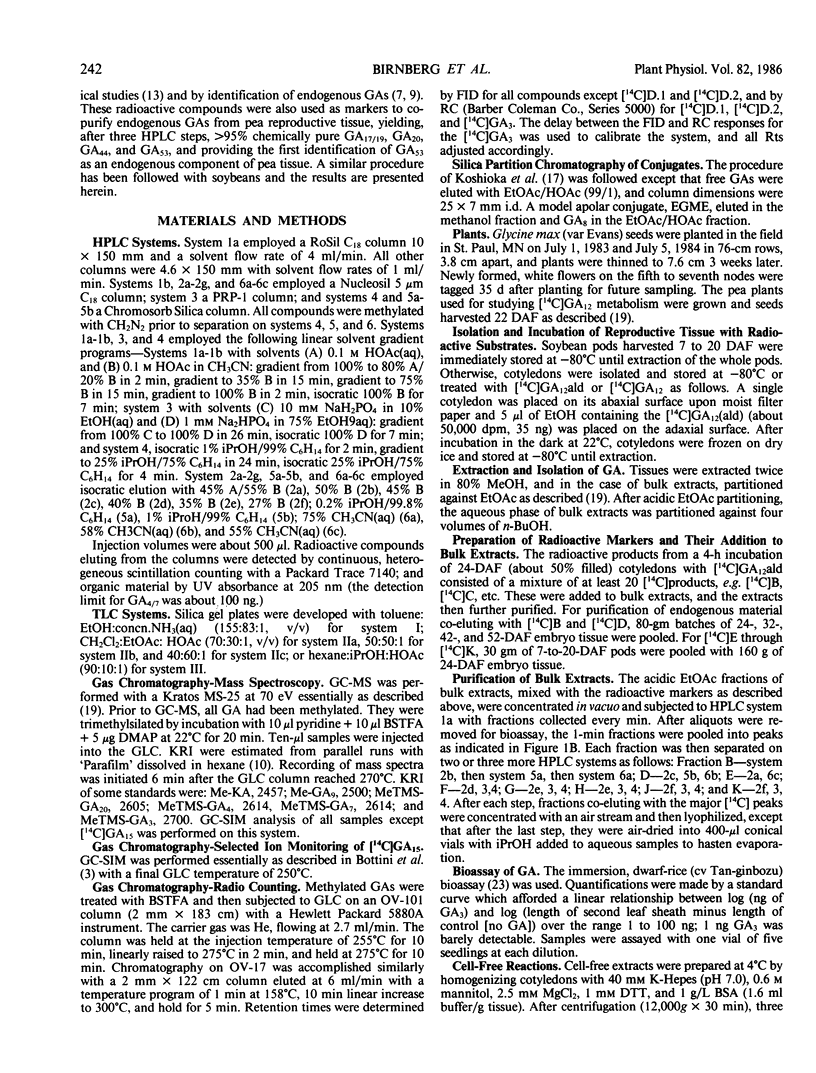
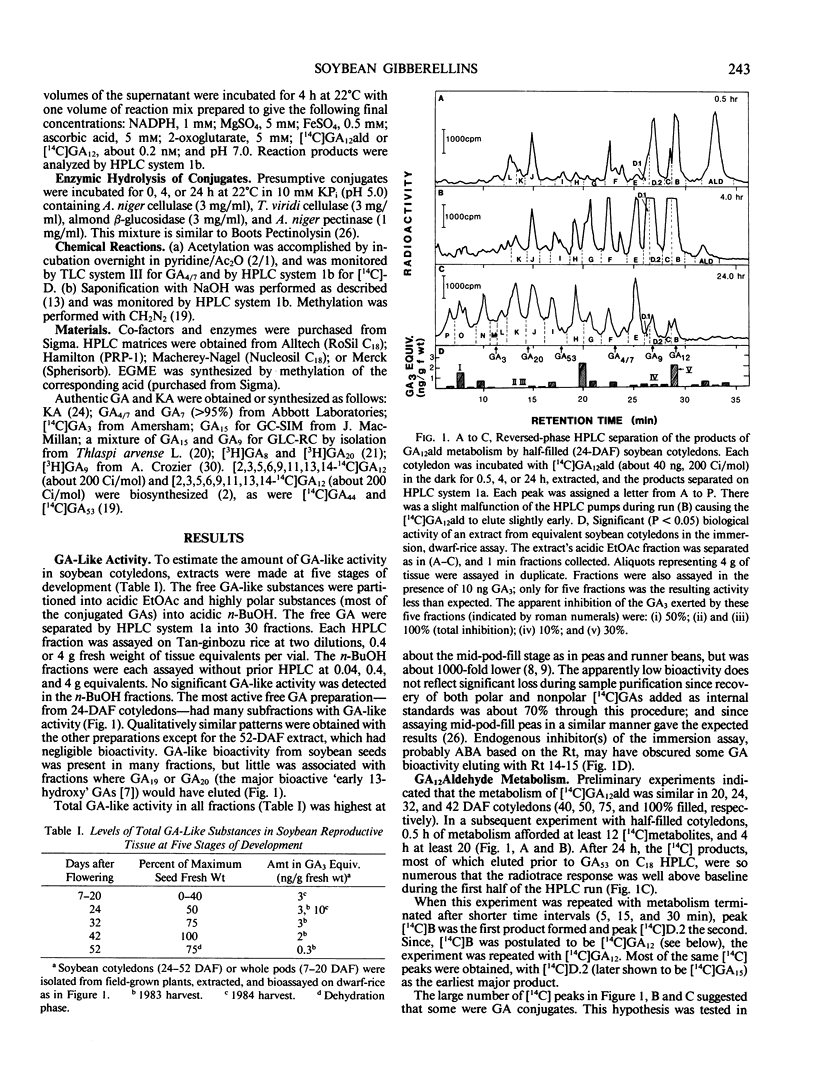

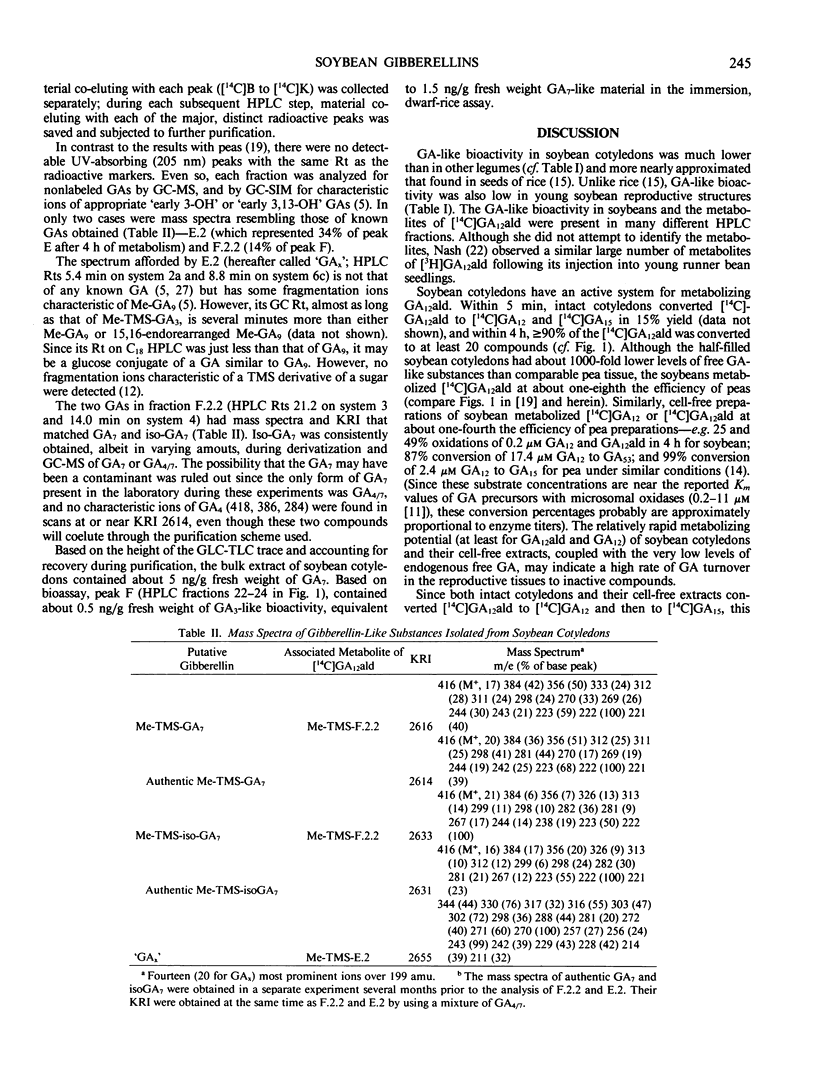
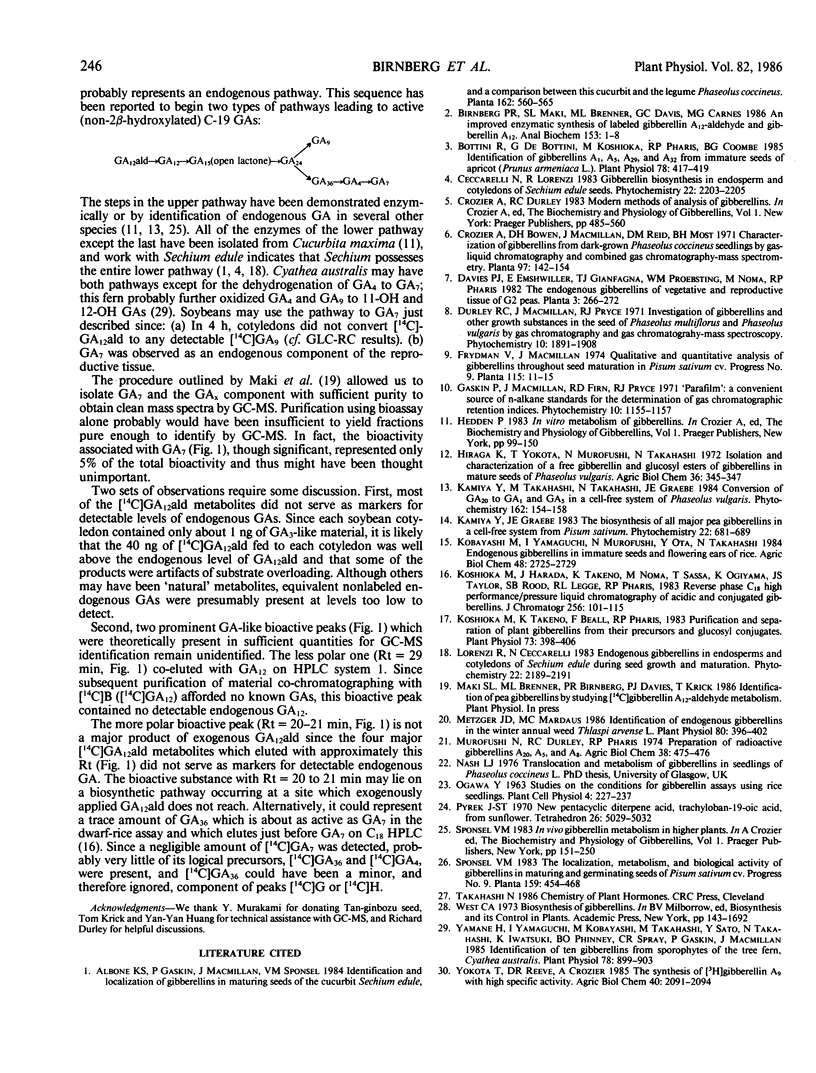
Selected References
These references are in PubMed. This may not be the complete list of references from this article.
- Birnberg P. R., Maki S. L., Brenner M. L., Davis G. C., Carnes M. G. An improved enzymatic synthesis of labeled gibberellin A12-aldehyde and gibberellin A12. Anal Biochem. 1986 Feb 15;153(1):1–8. doi: 10.1016/0003-2697(86)90052-7. [DOI] [PubMed] [Google Scholar]
- Bottini R., de Bottini G., Koshioka M., Pharis R. P., Coombe B. G. Identification of Gibberellins A(1), A(5), A(29), and A(32) from Immature Seeds of Apricot (Prunus armeniaca L.). Plant Physiol. 1985 Jun;78(2):417–419. doi: 10.1104/pp.78.2.417. [DOI] [PMC free article] [PubMed] [Google Scholar]
- Koshioka M., Takeno K., Beall F. D., Pharis R. P. Purification and separation of plant gibberellins from their precursors and glucosyl conjugates. Plant Physiol. 1983 Oct;73(2):398–406. doi: 10.1104/pp.73.2.398. [DOI] [PMC free article] [PubMed] [Google Scholar]
- Metzger J. D., Mardaus M. C. Identification of Endogenous Gibberellins in the Winter Annual Weed Thlaspi arvense L. Plant Physiol. 1986 Feb;80(2):396–402. doi: 10.1104/pp.80.2.396. [DOI] [PMC free article] [PubMed] [Google Scholar]
- Yamane H., Yamaguchi I., Kobayashi M., Takahashi M., Sato Y., Takahashi N., Iwatsuki K., Phinney B. O., Spray C. R., Gaskin P. Identification of Ten Gibberellins from Sporophytes of the Tree fern, Cyathea australis. Plant Physiol. 1985 Aug;78(4):899–903. doi: 10.1104/pp.78.4.899. [DOI] [PMC free article] [PubMed] [Google Scholar]


